
32 minute read
HUGGIES ASK THE EXPERTS
Delivery during Covid-19
Packing your bag Packing for the hospital is usually an exciting experience for moms-to-be. Here’s how to prepare now that COVID-19 is a factor, writes midwife and nurse Sister Des Meyer.
Advertisement
The sense of anticipation of the delivery, and your baby wearing their clothes is all part of the build-up to birth. But now we have a whole new way of having to approach this milestone of motherhood, by preparing for a COVID-19 delivery experience.
As the numbers continue to increase, the hospitals and gynaes are at a loss as to how to advise moms-to-be about what to expect at their facilities.There is a real possibility that birth partners and fathers might be refused entry if the numbers of active cases are such that they are hard to control. While we can understand that, it is a hard pill to swallow. We all hope that this will never happen, of course, but as things stand, it’s something to keep in mind.
The list below of what to pack for moms and babies is under review even since the last time I spoke on the Instalive session with Mama Magic’s Olerato. The length of hospital stay is steadily shortening, and presently sits at 24-48 hours maximum. For infection control, the hospitals may request that moms minimise the number of items coming from their homes.
Here are my suggestions: Set out my suggested list below (and what your hospital has suggested) on your bed. Plan to pack as little as possible, as you will not be staying for long. Go without the luxuries if you can.
Use zip lock bags (quite expensive, so look for cheaper options) of varying sizes. Roll up your nighties, pants or feeding tops and put them into a zip lock bag. Likewise with all your baby items. This keeps them clean and easy to find and pack. You can wipe them down if necessary. Bag all your items in this way. Press the air out of the bag so it will take up less packing space. Pretend you are going on an overnight flight, and are limited by luggage constraints. Use a small overnight bag, tote or even a plastic shopping bag that you can wipe down.
Plan to pack as little as possible
Decant toiletries into travel-sized containers and place in see-through toiletry bag/zip lock bags. Use a small toothpaste and travel sized toothbrush.
Once in the ward, don’t unpack. You can just look through your baggies to find what you need. If anything is wet or soiled, you can pop it back into its baggie. (Keep on your lap or a chair, never set on the floor). Make sure you have spare masks and some snacks in a zip lock.
So, essentially, look through the list and see what is a must-have vs. a nice-to-have and pack accordingly.
My mask protects you; your mask protects me. Sanitise. Distance. And keep in mind you are a mommy warrior who gave birth during a pandemic!
List for baby Onesies x3 Vests x3 Beanie Blanket Receiving blankets x2 Nappies Bum cream Cotton wool balls/rounds Dummy Sterilisation fluid/container Car seat (with a rain cover) List for mom *nice to haves Front fastening nightie or top Breastfeeding tops/cami Breastpads Breastfeeding bras (wear one, pack one) Feeding pillow* Nipple cream Loose fitting pants/leggings Gown* Slippers, or slip-on shoes (easier to clean) Pads and mesh panties Warm socks Your own pillow from home* Scrunchies, hairbrush etc. See-through travel toiletry bag Travel-sized toiletries Earplugs (drown out noise to relax/sleep) Squeezy bottle for rinsing while urinating (vaginal deliveries) Water bottle with straw Sanitiser and spare mask (FFP2) Lip balm Energy drink/smoothie Snacks (nuts, energy sweets, fruit) Zip lock bags (or equivalent) for wet/dirty items Own pen, ID book, medical aid card (in a zip lock bag) Spare chargers for phone/ camera etc Music on a memory stick*/ phone/tablet Face cloth/microfibre towel (zip lock) Labour ball/gym ball (if hospital does not supply) Massage cream*
ANTENATAL Mothers should take special care of themselves, especially those with underlying conditions.
Awareness and techniques for mitigation of
Controlling your G u e s t E d ’ s T h o u g h t s stress can be life altering for the new mama.
BLOOD PRESSURE during these stressful times
HOSPITALS AND DOCTORS’ ROOMS MAY NOT FEEL LIKE THE SAFEST PLACE TO BE RIGHT NOW, BUT IF YOU’RE PREGNANT, YOU STILL NEED TO BE HAVING ALL YOUR ANTENATAL CHECKS, WRITES DR ENRICO MARASCHIN.
A professor of obstetrics from Cape Town University recently hosted a webinar on the current COVID-19 situation and its impact on pregnant women. It was extremely informative but also highlighted a serious problem. Pregnant women are missing their antenatal appointments for fear of the virus.
Yes, COVID-19 is scary. There are risks. But what must be emphasised is that pregnancy is a very delicate time for a woman. There are so many changes taking place that are both wonderful and critical to the outcome of a healthy baby.
Understanding these changes and the importance of antenatal care will perhaps help mothers to be make the right choice about attending their follow-up appointments.
What changes are taking place in the body during pregnancy?
One of the major changes occurs in the cardiovascular system. By the time a woman is around 34 weeks pregnant, she will have as much as an additional 1 250ml of blood. As you can imagine, the heart has to work very hard to pump the extra volume throughout the body and especially to the placenta. This is essential for normal growth and development of the foetus.
The kidneys also make changes during this time. They release more of a hormone known as vasopressin, and this results in the body retaining more water.
These two factors, together with other underlying issues, may lead to high blood pressure. High blood pressure can lead to serious health problems for the mother and infant, but the important thing to know is that in most cases it is preventable and treatable.
What causes high blood pressure during pregnancy?
Drinking alcohol or smoking
Lack of exercise
Being overweight
First-time pregnancy
Woman who have had in vitro or other assistance with falling pregnant
Multiple pregnancy
A family history of pregnancy related high blood pressure
Chronic illnesses like diabetes or auto-immune issues
Why is high blood pressure dangerous?
Uncontrolled, high blood pressure has serious consequences for mom and baby.
Prematurity or poor growth: high blood pressure affects the mother’s blood vessels and makes it difficult for oxygen and nutrients to pass through the placenta. The foetus doesn’t get all that it needs to develop normally, resulting in slow growth, low birth weight and prematurity. A pre-term baby runs the risk of lung problems.
Placental abruption: with increased pressure on the mother’s vessels the placenta may tear away from the uterus wall and cause the mother to bleed profusely.
Damage to organs: poorly controlled blood pressure may damage the mother’s kidneys, heart, lungs or brain.
Future illness for mom: A mother who has suffered pre-eclampsia has a higher risk of cardio-vascular diseases later in life.
What illnesses occur as a result of high blood pressure?
Gestational hypertension: This condition usually starts at about 20 weeks of pregnancy. Gestational hypertension needs to be monitored closely, but generally it is a condition that settles after the baby is born. Pre-eclampsia: This is a more serious condition and it can have severe consequences. It usually occurs in the third trimester. A woman with pre-eclampsia will usually experience numerous symptoms including high blood pressure, protein in the urine, water retention, severe headaches, shortness of breath, vomiting, dizziness and blurred vision. If the pre-eclampsia is left untreated, the woman may have seizures as a result of the condition or develop eclampsia. Gestational diabetes: When blood pressure is poorly controlled, it canlead to gestational diabetes. This affects both the mother and foetus. HELLP syndrome: In very severe cases of pre-eclampsia, a lifethreatening liver and blood condition may develop. H stands for Haemolysis. When this occurs the red cells in the blood are broken down. The E relates to raised liver enzymes which indicate damage to the liver. The E and L relates to elevated liver enzymes, which indicate damage to the liver. The second L and P relate to the low platelet count in the blood. Platelets allow our blood to form clots. If they are too low, a patient runs the risk of bleeding. A woman who develops HELLP syndrome is truly a medical crisis and something that every doctor fights to prevent in their patient.
What can I do to protect myself?
High blood pressure is also known as the “silent killer”. A large number of people do not have any symptoms. For this reason, the most important thing is for pregnant woman to attend their antenatal check-ups, where blood pressure can be properly monitored along with the other necessary checks. Along with antenatal checks a pregnant woman should:
Eat healthy foods
Do moderate exercise
Drink adequate water Avoid alcohol and cigarettes Try to control stress. Small changes in a woman’s life can affect blood pressure, so under current COVID-19 conditions this is a real risk. Women who have pre-existing conditions or where there is a history of blood pressure problems, must inform their healthcare professional.
If I do develop high blood pressure what treatment will I receive?
Treatment for high blood pressure will be at the discretion of the doctor. Some high blood pressure medications are not recommended during pregnancy so it is really important that treatment is prescribed by a doctor.
In severe cases a woman might need medication to prevent seizures. The doctor may opt to give medication which will help speed up the lung maturity of the baby in case it becomes necessary to deliver the baby before the due date.
Pregnancy is a very exciting time, but is also a time when women become anxious and worry more than usual. The current pandemic has left women isolated from family and friends and afraid of medical facilities. It is understandable, but even during this time antenatal checks are vital.
Your doctor will take every precaution possible to prevent the risk of COVID-19 infection, but attending these appointments is ultimately up to the mother. If she understands the importance, then she will be able to make the decision that will safeguard her health and that of her unborn child.

Pregnancy super foods
IT IS IMPORTANT TO ENSURE THAT YOU ARE GETTING THE RIGHT NUTRITION FOR YOU AND YOUR BABY DURING PREGNANCY. DARSHAN PATHER SPOKE TO DIETICIAN DEIDRE LINDEQUE ABOUT THE BEST PREGNANCY POWER FOODS TO INCLUDE IN YOUR DIET.
‘Eating for two’ during pregnancy is a myth with regards to calories or portion size. But it is important to take twice as much responsibility for your choices. Eat twice as well, not twice as much.
According to the American Obstetric Society, a singleton pregnancy will require an additional 300 calories into your daily diet from your second semester. This equates to a glass of milk and a 100g chicken breast.
Eat twice as well, not twice as much.
With all the diet fads and nutritional advice doing the rounds, it’s hard to decide what foods are actually good for you during your pregnancy. Don’t know where to begin? Fear not, we’ve got you covered!
Here is a list of some pregnancy ‘superfoods’ to include in your diet as you grow your little bump.
Beans Beans not only taste good, but are packed with protein, iron and fibre. Focus especially on black beans, lentils and chickpeas. Black beans give that garden salad an extra bit of flavour and texture. A heartwarming bowl of lentil soup is great for the immune system, and hummus is a perfect snack with some celery and carrot sticks.
Broccoli Broccoli is an essential green that contains calcium, fibre, folate and other awesome stuff that can improve the appearance of skin, strengthen vision and regulate blood pressure. Add it to your creamy pasta bake or as a steamy side to your roast chicken dinners.
Eggs “Humpty Dumpty sat on a wall, Humpty Dumpty had a great fall.” As a complete protein, containing all amino acids, eggs aid in growth and development of the new baby. Scrambled eggs on toast, cheese and spring onion omelette, potato and egg salad – the opportunities to add egg to your diet are endless!
Milk This heavenly drink is an amazing source of calcium, protein and vitamins A and B. There are many
variations, but when you’re expecting it’s advisable to go for the fresh, full-cream kind to gain more nutrients. Coconut, almond or soymilk, as well as lactose-free milk, are great alternatives for lactose intolerance.
A simple glass of warm milk with a hint of honey and nutmeg will get you ready for bed in no time, and provides 50% of the ‘nutrient gap’ induced by pregnancy.
Nuts Besides the potential benefits of nuts on brain function development of the foetus, they are also a great source of healthy fats, fibre, vitamin E and other nutrients. As a great source of both fat and protein, nuts are a great snack to help regulate pregnancy-related blood glucose fluctuations. A handful of almonds first thing in the morning can help to keep morning sickness at bay.
Salmon Wild-caught salmon is rich in omega-3 fatty acids, low in saturated fat and a great source of vitamin A, B, D and numerous micronutrients. Unlike the larger fish, tuna and swordfish, the mercury content is significantly lower, but it is recommended to limit intake to twice weekly.
To reduce the risk of food poisoning, raw fish e.g., in sushi, is not recommended. Stick with fresh, wild-caught cooked salmon, served with a generous portion of steamed greens drizzled in olive oil.
A handful of almonds first thing in the morning helps with morning sickness.
There are plenty of other superhealthy foods that you should prioritise during your pregnancy journey. Eating a large variety of foods is one of the most important nutrition tips to focus on. It’s also important to note that if you have any underlying conditions or allergies that you seek advice from a medical expert first.
Happy Eating!
S A F E

S E C U R E

R E L I A B L E


Shop www. fu rnitu r Online eexpress. co . za 01 1 440 1 671
MAGIC MOMENTS “ All dressed up! ”
Nelisiwe MaDuma Magubane



Nabeela Mahomed
Shanawaaz Leeman Essa


Saadiqah Abrahams
Supported by




Register your pregnancy now & start your wishlist on registry.mamamagic.co.za
BABY This is such an awesome programme! I
remember trying to find creative ways to exercise with my daughter – it’s such fun.
No excuse not to G u e s t E d ’ s T h o u g h t s exercise: keeping fit
while wearing your baby
LOCKDOWN AND THE COVID-19 PANDEMIC MEANS MANY MORE OF US HAVE TO EXERCISE AT HOME NOW – AND THAT CAN BE A CHALLENGE WITH KIDS AROUND. POTSO MPANDAWANA HAS PUT TOGETHER A PROGRAMME SO YOU CAN EXERCISE WHILE BABYWEARING!
A lot of us have been home with the family and have had to make do, since the gyms are closed. So the next best thing is exercising at home with the kids around – which can be a challenge.

Relaxing of the restrictions to Level 3 has meant we can exercise outdoors at any time of the day, which means you can take walks with your little ones, push baby in the stroller or go for a jog or walk by yourself.
After many weeks of lockdown with the family, you probably want some time out to yourself, but this can also be viewed as a way or opportunity to create a stronger bond with your little one/s and instil the culture of a healthy active lifestyle. If you have a toddler you will know that it’s a case of ‘monkey see, monkey do’. Whatever Mommy or Daddy does, they also want to do it.
You probably want some time out to yourself.
Our little ones watch us so much and want to be like us. Just yesterday I said to my baby, “squat,” and she did a baby squat and stood up. It was very cute indeed, but I was more than encouraged and felt a push to continue to be a good role model to her. It’s never too early to start.
With the rising numbers of obesity, we as parents/moms can help deal with this by training with our little humans. I see it as killing two birds with one stone: exercise time and bonding time.
These exercises are suitable for babies that can still fit in the carrier. Take special precaution if it’s the first time exercising with baby in the carrier. It’s also important to remember that you need to get clearance from your doctor before starting with any workout, especially if it’s soon after birth. Here are some tips and guidelines:
Make sure that baby’s airways are always open. Ensure their back and neck are supported. The carrier should be snug but not too tight so it doesn’t prevent baby from breathing. When baby is in the carrier, they should not be so far forward that you can’t kiss them or see their face. Baby’s head should be able to rest on your chest. Know the weight and height limit that your carrier can hold, as this will ensure that both you and baby are safe and adhering to the safety instructions. Temperature control. As you start working out both you and baby will get warm. Make sure baby isn’t
Marching on the spot: two sets of 20 repetitions
Air squats: three sets of 10-12 repetitions
Shoulder rolls - front and back: three sets of 20 repetitions (10 front and 10 back)
Modified high knees: slow and controlled, three sets of 10-12 repetitions
Main session
Squats: 3 sets of 15-20 repETITIONS Stand with your feet apart, make sure they are slightly wider than your shoulders. Squat down by bending hips back while allowing knees to bend forward, keeping back straight and knees pointed in the same direction as feet. Descend until thighs are just past parallel to floor. Squat up by extending knees and hips until legs are straight. Return and repeat. wearing heavy clothes that will cause them to overheat and make them restless. Hungry baby = unhappy baby. Feed baby at least 20 to 30 minutes before the workout. Remember that while you are wearing baby, they are right there by the food source. So, if they are hungry and can smell the liquid gold, but are not able to have some, your workout will be disturbed.
Now that we have covered the basics, what are the benefits of wearing your baby while exercising?
Bonding time with mom.
Teaches kids to be active from a young age.
Can help soothe baby.
You actually get a workout in.
Helps with baby’s development.
The extra weight helps you to
baby Exercise Programme
Warm up:
Notes: Please warm up. (e.g., Brisk walk in the garden) Drink water. Take breaks when you need to. Don’t push yourself, and keep correct alignment during exercises. Remember: You are awesome and you doing a great job.
develop resistance.


Backward lunges: 3 sets of 10 each side Stand with your feet shoulder-width apart and the hands by the sides of the body. Take a step backward with the right leg and strike the floor behind the body with your right forefoot. As your right foot lands on the floor and stabilises, bend your left knee and lower your body down toward the floor. Pause when your left thigh is parallel to the floor. Return to the starting position by pushing off of the right rear foot and straightening out the left leg. Repeat on your other leg. Be sure to keep the upper body straight during the entire exercise.




Plié squats: 2-3 sets of 12- 15 repetitions Stand with your feet apart, make sure they are slightly wider than your shoulders, point your toes out like a ballerina at about 45 degrees. Make sure you are comfortable and you have balance then gently lower yourself down, bending your knees and sitting back into a squat, keeping your back straight. Squeeze your glutes, then come back up and repeat. If you need more balance and support, you can hold onto a couch, chair or door handle.
Bicep curls with dumbbells/water bottle filled with water: 3 sets of 15 curls each hand Position two dumbbells to sides, palms facing out, arms straight. With elbows to sides, raise one dumbbell with palms facing up all the way to your shoulders. Lower to original position and repeat with opposite arm. Continue to alternate between sides.


Modified high knees/alternatively add in skipping but without the baby in the carrier: 3 sets 40 seconds to one minute Lift right knee high just above hip while swinging left arm up and right arm back. Lower right leg gently to the floor and as it touches the ground, lift left leg up while pulling left arm back and right arm forward. Continue movement on opposite side, alternating quickly between sides.
Reminder: this is a low impact version and there should be no hopping or jumping involved.


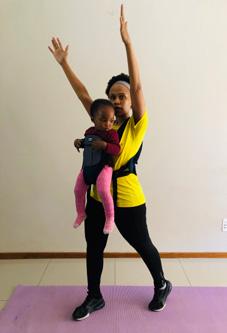
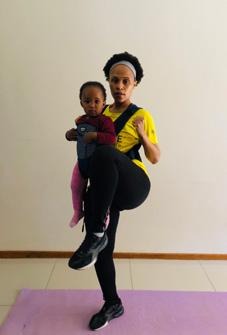
TRicep kickback 3 sets of 12 repETITIONS each side Grab a dumbbell with your right hand, place your left foot forward and your right foot back, bend your left knee and lean your torso forward. Raise your right elbow back, so that the upper arm is almost parallel to the floor, and kick back until your arm is fully extended. Slowly lower the dumbbell back to the starting position.
Cooldown session
Light cardio
Brisk walk for 10-15 minutes and don’t forget to stretch.
These are a few exercises that can help you with exercising while wearing your baby but remember just the action of wearing baby is a start and helps you learn to engage your core. Ensure that you have correct alignment and baby is safe in the carrier. Do not wear your baby for more than an hour and if you feel lower back pain or pain elsewhere while exercising, please stop the workout. Remember these exercises can be done alone without baby in the

carrier as well.
If you don’t manage to exercise today, then schedule it for the next day. And remember: you are doing a great job!
MOM’S FAVOURITES
Guest editor Priyanka Naidoo talks about the products that have made caring for her child a little easier.

Pigeon baby bottles Used under supervision, this is a great chair. The toys are fun and tactile, the bouncing motion keeps baby entertained and we also used it as a first feeding chair. Bumbo booster seat This was such a help. It was a booster seat, so Eden joined us at the dinner table from four months and it was portable, so perfect for restaurants.
Eden latched onto this teat the easiest as it was designed for infants from Day 1. We had no leakage or spills with this
Bright Starts Happy Safari Bouncer


bottle. Leap Frog Toys Scout portable and large Scout have been great learning toys since birth.
Fisher Price Potty Which little toddler would not love a little character potty to make the experience playful and inviting? Eden loves ducks, so she finds sitting on the duck quite hilarious. Potty Training Pants I wish I had more of these. They are versatile, durable, fun and easy to use.

MILESTONES 5 reasons your baby is resisting the nap

IT’S INCOMPREHENSIBLE TO ANY PARENT THAT A CHILD SHOULD RESIST SLEEP, AND YET THEY DO. SLEEP EXPERT NICCI PROOME LOOKS AT WHY YOUR BABY MIGHT BE REFUSING TO NAP.
We have all been there as a mom, dad or caregiver: walking up and down the halls, bouncing on the exercise ball, ready to pull our hair out!
We can clearly see that our grumpy babe is exhausted, but why won’t he nap! We are exhausted for them.
Here are five main contributors to nap refusal.
1. Your baby’s sleep environment might be overstimulating There is a high possibility that even though you and your baby boutique designed your baby’s bedroom beautifully, there might be some tiny factors contributing to a more wakeful state during their winddown and putting-to-sleep phase. What baby really needs is a calming environment with as few distractions as possible.
What baby really needs is a calming environment.
For example, the mobile hanging over their cot flashing lights and singing gently to them is a lovely little trinket, but to a baby or a toddler it’s a fantastic distraction that can keep them entertained for hours.
Our aim would be to create a sleep space for your baby. This would include a dark, cool room with some tranquil white noise in the background. That means little to no visual distractions with simple decor and a gentle wind-down before all naps and bedtime. This will give you a better chance of a nap happening and your own sleep not completely falling apart.
2. You might have missed their sleep window A sleep window is the amount of time in hours and minutes that a baby or toddler’s body is able to remain awake before they are naturally ready for sleep again. There’s a natural rise and fall of hormones within their circadian rhythm, which should be able to stay within normal range before secreting cortisol, which is a stress hormone.
Catching your baby or toddler within these windows is of utmost importance – if they become overtired, they can become extremely difficult if not impossible at nap and bedtime.
I have heard too many times that “My baby is not tired enough to go down for a nap!” In many cases it is not that they are not tired enough to go down for a nap, but that they are actually overtired and have missed their sleep window.
3. During the day your baby has a physiological drive to sleep less During the night your baby’s level of melatonin rises and their cortisol drops, which results in the perfect concoction for better sleep. Melatonin starts rising rapidly from around 6pm, as the sun sets. This is why we generally get much better sleep from our babies and toddlers overnight, because melatonin is at its highest and cortisol at its lowest.
After midnight, cortisol begins to rise and slowly wake us up for the day as the sun rises. Our melatonin also runs out and serotonin increases.
Cortisol peaks at around 8am and stays relatively high throughout the day, which tends to make naps a lot harder, even though our babies are clearly tired. Falling asleep for naps during the day is a lot harder to achieve than going to sleep at night because of the rise and fall of cortisol and melatonin combined.
4 They’re ready to drop a nap In the early days your newborn will be napping at least around five times per day. At around 18 months they will be dropping down all the way to one nap per day, and by three, they won’t nap at all.
There are so many nap transitions throughout this time that it can be difficult to keep up. If you are struggling with naps perhaps your baby’s routine might be slightly off or you’re not matching their sleep needs to what is age-appropriate.


Let’s have a look at some classic signs that your routine might be slightly off or your baby is ready to drop a nap:
consistently plays in their cot/bed for a really long time at every nap consistently has very short naps all day, yet still looks tired suddenly extremely upset at bedtime and nap times they’ve started waking up excessively, commonly before 10pm waking much earlier than before, any time prior to 6am they have become increasingly miserable between naps they started to fall asleep whenever you drive anywhere nap refusal has become excessively worse
5. It is after 3pm Naps after 3pm are close to impossible and require way more parental assistance. Do not beat yourself up if your baby will not fall asleep unassisted at this time – it’s 100% normal and it is advised that a quick nap at the end of the day after 3pm is actually taken in the arms.
We all feel hideously tired and grumpy in the later afternoon, but it’s not a time to expect great naps from a baby. Anything from 30 to 45 minutes is about the most we can reasonably expect at this time.
I wouldn’t get too stressed about it, as the lateafternoon nap disappears around seven to eight months anyway. Fortunately, in the later afternoon it’s lovely to take your baby out for a walk in your baby carrier or pram, or to cuddle up together on the couch or rocking chair .
In conclusion, watch your baby carefully. If they are not showing signs of tiredness, then watch the clock. Sometimes a baby can go from hero to zero in a matter of minutes with very little warning.
When popping baby to bed, ensure their sleep space is a sleep-enabling one, set for the onset of a baby’s sleep and not that of an adult. Remember to check your age-appropriate nap routines to ensure baby is not getting too many or too few naps, and – most importantly – not getting too much sleep at the end of the day, creating a bedtime battle.


PRIYANKA NAIDOO
TRANSFORMATION LIFE COACH
Tools to build secure & happy children
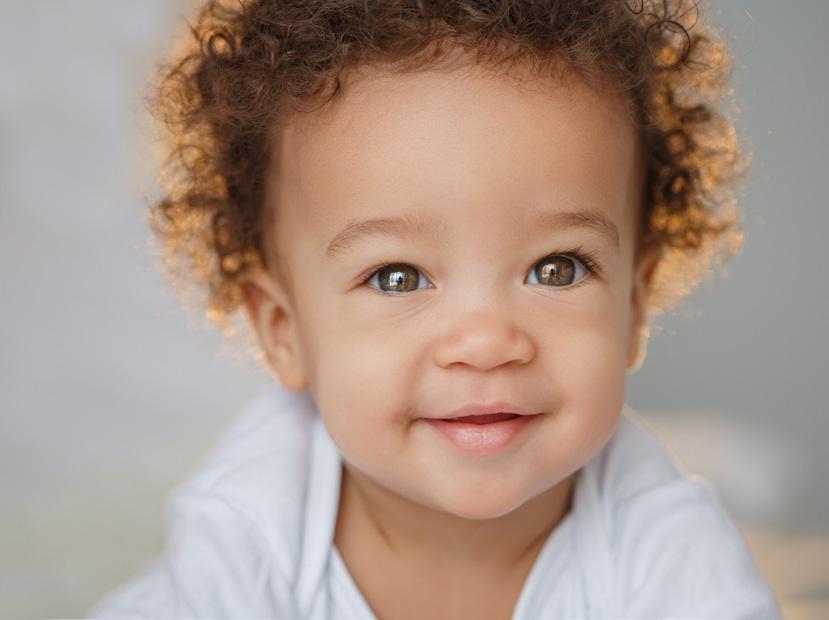
CHILDREN LEARN SO MUCH FROM MODELING THEIR PARENTS’ BEHAVIOUR. GUEST EDITOR AND PARENTING COACH PRIYANKA NAIDOO HAS SOME TIPS ON HOW TO BE YOUR CHILDREN’S ROCK AND MODEL THE BEST BEHAVIOUR FOR YOUR CHILDREN.
Parenting is difficult and even more so now that we find ourselves in the middle of lockdown life. We are all trying to find our way around this “new normal, ” especially our children. Our kids are experiencing their own types of stress and anxiety, but the one constant source of comfort and certainty they have in their life is YOU.
You have a responsibility to your children; to be present, intentional, and to protect their innocence by positively handling stress, to safeguard your family’s wellbeing. We can start the process with three simple yet powerful tools that we have available to us:
Awareness Children, through every stage from toddler to teens, are always watching what we as parents do. They see how we handle stress. They watch how we treat other people and observe how we deal with feelings. They soak it all in like little sponges. Even when you think your children aren’t paying attention, they are always watching, so it’s essential to be aware of how to respond to situations.
We can agree that the primary role of a parent is to protect, provide, and help mould your child into kind, respectful, honest, resilient, responsible adults. More often than not, the easiest and most effective way to teach a child is to model the behaviour and problemsolving skills we want them to learn.
Our little ones have a way of reminding us to reel ourselves in daily.
Parenting coach, author and children’s advocate LR Knost says: “Our children are watching how we live far more than they hear what we say, they are learning to live by our choices, not by our words.” I couldn’t agree more. How often have we, as adults, found ourselves reacting and emulating behaviour that has been modelled by our parents, teachers, or caregivers. This may mean taking a closer look at your habits and making some changes, which will benefit you and your child.
Always think of what you want your child to learn from you and try to model that in your life. Naturally, we will make mistakes, and that’s the beauty of life: that we get to try again every day. When our kids see us making mistakes and then solving them or showing them how to be resilient in a tough time, we are exhibiting behaviour that will shape the way they will address a mistake or a difficulty in their own lives.
When you do make a mistake and behave in a way you shouldn’t in front of your child take the opportunity to talk to your kids about where you slipped up and how you hope to be different next time. Children learn important lessons from you even when you make mistakes.
Presence Your presence and love are the basis of what every child needs. Handling and processing emotions are difficult, and we always need space to explore different feelings, even as adults.
Emotionally strong and resilient people and children can process and feel an emotion and then let go of the negative sentiment related to the feeling. Demonstrate how to manage emotions, like frustration or sadness, by talking about your feelings when you are upset, angry, or sad, and encouraging your child to do the same.
When you want to teach your children something new, whether it’s how to make their bed or how to tie their shoes, show them how you do it. Then, let them practise it on their own. Showing, rather than telling, can be the best way for kids to learn a variety of new skills. Paying attention to your child, praising their good behaviour and effort, makes their little hearts burst with happiness and accomplishment.
Here are some examples of other things that make your presence felt with your kids:
Laughing at yourself Saying sorry Forgiveness for self and others Positive talk Expressing feelings with words Listening to feelings Addressing behaviour with concern, patience, and love Kindness to self The ability to move on from hurt or offence Addressing the behaviour, not punishing the person
Connection Studies have shown that uninterrupted moments with your children for at least five two--minute intervals during the day will set the foundation for the importance of connection, conversation, and security. These moments will give children the ability to respect others as well as have a sense of self-respect. Have conversations with your kids about the importance of racial diversity, respect for differences, and caring for others. Talk to them about why it is important to protect our minds and our hearts. Talk to them about fun things too. Laugh and be engaged with your child – at different moments in the day.
We all know that parenting is no easy feat, but certainly the most rewarding and honourable role we will ever play. With awareness of your positive influence and behaviour, being emotionally present, and connecting with your little one, parents display and create a safe and nurturing environment for children to grow, love, and enjoy the most incredible years of their life.
Your children never want you to be upset, stressed, or uneasy and/or be the contributor to your stress. Use moments to model behaviour that you would like your kids to aspire to, especially when life gets hard. The aim is to strive for progress in our daily lives, never perfection.
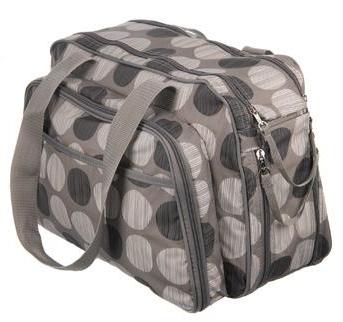
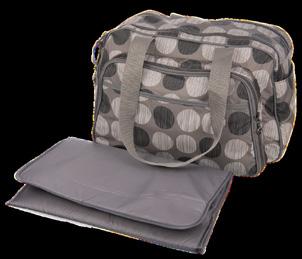
....it all starts here













